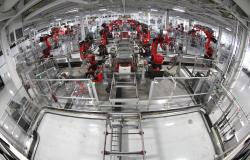Capital Deepening in the Twenty-first Century: a Wrap Up of Findings

This week, Lukas Schlogl and Andy Sumner up their special series on the future of economic development, work, and wages in developing countries. We draw some conclusions.
We have surveyed the literature on automation and in doing so discussed definitions and determinants of automation in the context of theories of economic development, assessed the empirical estimates of employment-related impacts of automation and outlined the public policy responses to automation.
We have shown that the contentious debate on automation is by no means new. Its origins can be traced back to classical political economy and thinking on economic development and on the tensions between productivity gains due to capital deepening (i.e. more machinery, fewer workers) versus broad-based employment creation. Both the optimistic and pessimistic camps that have emerged over time have made valid points. To understand the employment dynamics of automation-driven structural change, our survey paper used a simple framework in the tradition of W. Arthur Lewis (and William Baumol) and with recognition of Marx’ reserve army thinking.
In conclusion, we would argue that the main implications of advances in technology and automation are not mass lay-offs and technological unemployment necessarily (though both are plausible under certain scenarios) in developing countries, but an increasing pressure toward deindustrialisation and deagriculturalisation.
Disrupted development
Empirically, the impact of automation is complex to estimate, and most studies have tended toward technologically deterministic approaches. Theoretically, the net effect on jobs could be both positive (lower prices lead to higher quantities demanded and thus more labour demand) and also negative (displaced labour is not absorbed in an ‘automation-resistant sector’). Manual routine work, especially in agriculture, remains prevalent throughout the developing world, which is an important concern. Overall, the focus of many studies on employment is arguably too narrow, and there are broader questions about the impact of the digital revolution on structural change and strategies of economic development to be addressed.
The developing world could well experience more negative impacts from automation than the developed world, since (i) there are substantially more jobs to be lost through labour-substituting technical progress than in the rich world and (ii) new industries may stop outsourcing production to the developing world. We argue that it is likely that real wages may stagnate rather than unemployment rise per se in the developing world which implies socio-political consequences. This line of argument is, of course, particularly tailored to the characteristics of labour-abundant open economies and may not be generalisable beyond that.
A narrow policy space?
One way or another, technological innovation is causing disruption and thus poses questions for public policy. We would express skepticism about the often-voiced call for skills-based development strategies alone. Social safety nets, on the other hand, do seem to offer one strategy; yet, to the extent that they raise the cost of labour, could exacerbate the trend toward technological substitution. In this context, discussions about a living-wage level universal basic income (UBI) somewhat smack of a “first-world problem”: to be able to worry about the redistribution of profits due to productivity gains assumes the luxury of jurisdiction over those profits, which many developing countries may not have. So, what to do?
We see the policy space for developing countries split between coping and containment strategies and constrained by globalisation. Protectionist trade policy in the North could well accelerate reshoring, and hence the impacts on the developing world that our paper discusses (consider e.g. the recent opening of a large factory of the Chinese high-tech manufacturer Foxconn in Wisconsin). In the long term, utopian as it may seem now, the moral case for a global UBI-style redistribution framework (how about we call it GUBI?) financed by profits from high-productivity production clusters in high-income countries may become overwhelming, but it is difficult to see how such a framework would be politically enacted. For the moment, in any case, workers in developing countries are facing an uphill (and upskill) battle against a growing “Robot Reserve Army”.
Future research on the future of work
Avenues for future research are numerous. Here we simply set out a range of indicative questions.
One of the most pressing research questions for development economics is, given a context of automation and digitalisation, how are developing countries to maintain the quantity and quality of employment growth?
This question can be broken down into three clusters of sub-questions. First, regarding the nexus of poverty and employment: How/when/why does productivity growth translate into employment growth? What determines the distribution of productivity gains in terms of the functional distribution of income between capital and labour?
Second, regarding the nexus of automation and employment: Which tasks are de facto being automated and by when? How do automation and digitalisation impact different developing countries, considering their specific production, employment, and export structures, and differing contexts?
Third, regarding political and policy implications: What have been or are likely to be the political consequences of changes in employment due to automation and digitalisation? Under what conditions and circumstances can technological change and deindustrialisation be inclusive? What factors incentivise and constrain the adoption of labour-saving technologies? And how have national and sub-national governments responded to date? How have existing deindustrialisation, automation, and its socioeconomic effects expressed themselves politically? What are the public policy options for governments?
In sum, there are numerous questions arising for the future of economic development that automation throws up. Understanding the impacts of automation on the economic development of developing countries can only be well understood if such questions are urgently pursued.
In conclusion
In conclusion, here are three key messages to take away:
- First, automation is challenging the competitive advantage of low-cost labour of late developers.
- Second, many developing countries have a vulnerable labour force in terms of skills and age. Wage stagnation and premature deindustrialisation could loom. However, unemployment is not (yet) the problem.
- Third, we need to ask different policy and research questions and be concerned about the jobs impact of technology and the political economy of automation rather than just automatability in principle.
In that vein surplus labour theories such as the Lewis model could once more help us understand the dynamics of economic development and technology-led structural transformation in the twenty-first century.
Lukas Schlogl is a Research Associate with the ESRC GPID Research Network at King’s College London. He works on structural change, digital transformation, and political behavior in developing countries.
Andy Sumner is a Reader in International Development in the Department of International Development, King’s College London. He is Director of the ESRC Global Poverty & Inequality Dynamics (GPID) Research Network.
This post first appeared on GPiD's blog.
Image credit: Steve Jurvetson via Flickr (CC BY 2.0)


